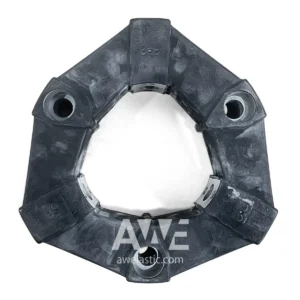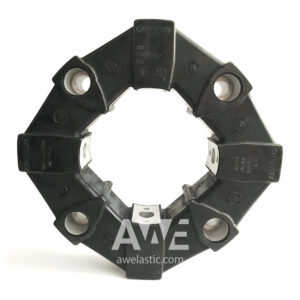Centaflex A coupling identification
Centaflex A couplings are relatively straightforward to identify. The main identifying information can be found directly on the coupling element:
Size: The size of the coupling element is typically stamped or embossed on the element itself. This information is crucial for ensuring compatibility with the shafts and power transmission requirements of the application.
Shore Hardness: The shore hardness of the rubber element, indicating its flexibility and damping characteristics, is also typically marked on the element. This information helps determine the coupling’s suitability for various applications with varying misalignment and vibration levels.
Fitment Type: Centaflex A coupling elements come in two main fitment types:
Type 0: This type utilizes screws for secure attachment to the flywheel or hub.
Type 0-S: This type employs pins for secure attachment to the flywheel or hub.
By examining these identifying features on the coupling element, along with the coupling’s overall dimensions, you can effectively determine the appropriate type of coupling for your specific application.
There are other additional codes on the coupling, which help to identify that you have Centaflex A coupling, but they don’t help to identify correct size and fitment, so if you found codes D.B.P. – 2019608 and JAP.Pat. – 778322, Mikki Pulley all good, but you should search for another part of the coupling.
Centaflex A coupling identification







